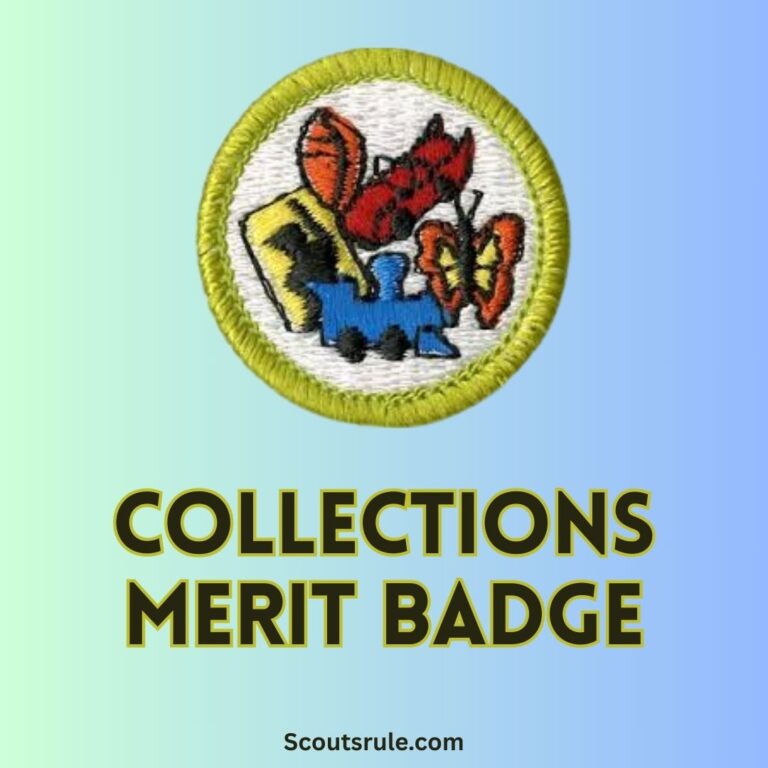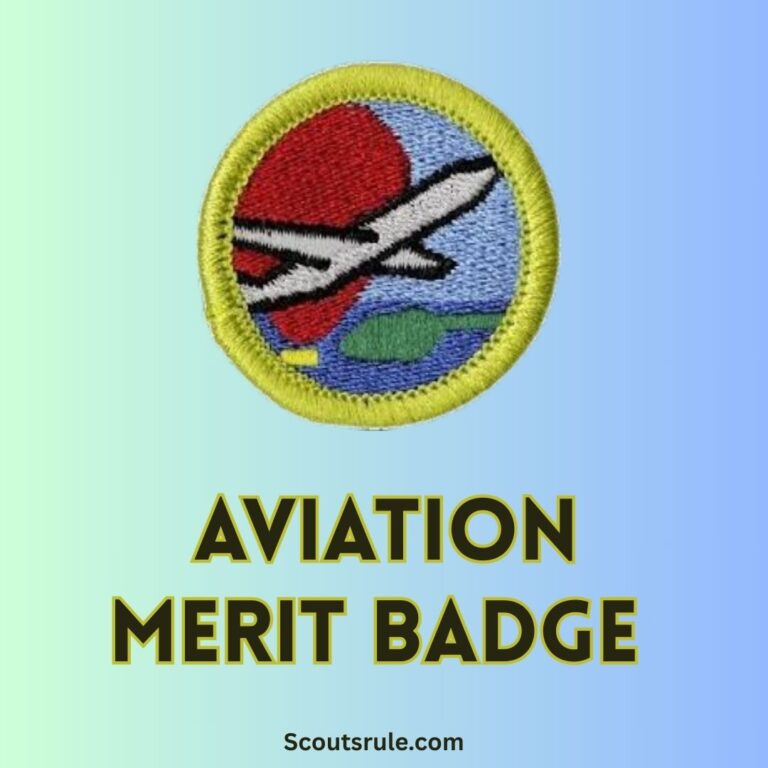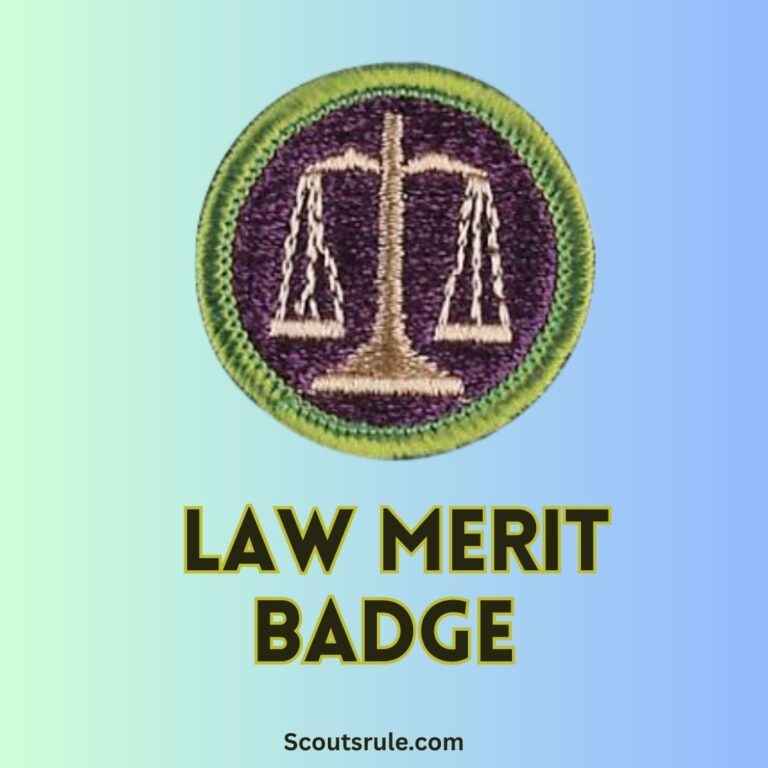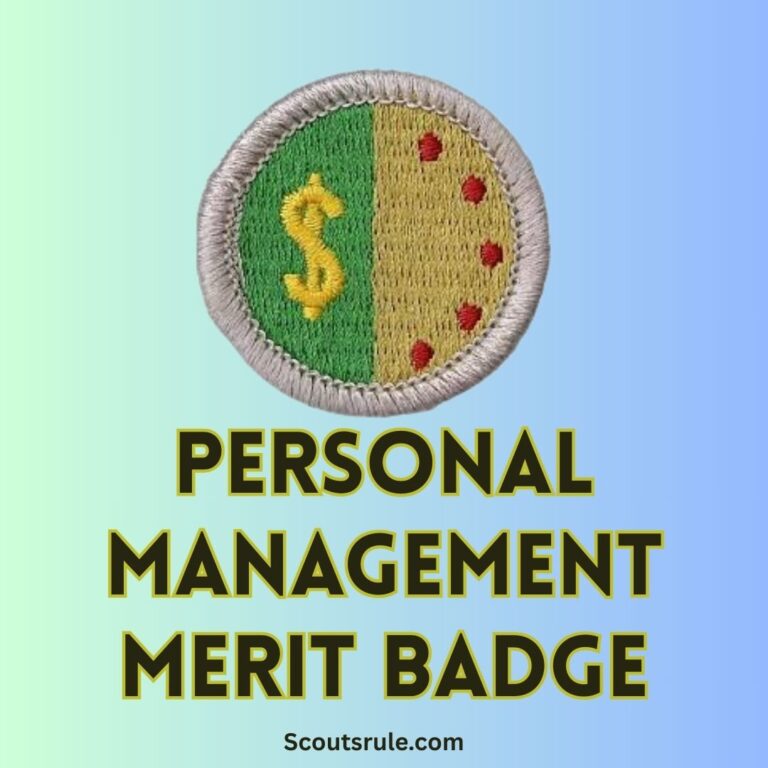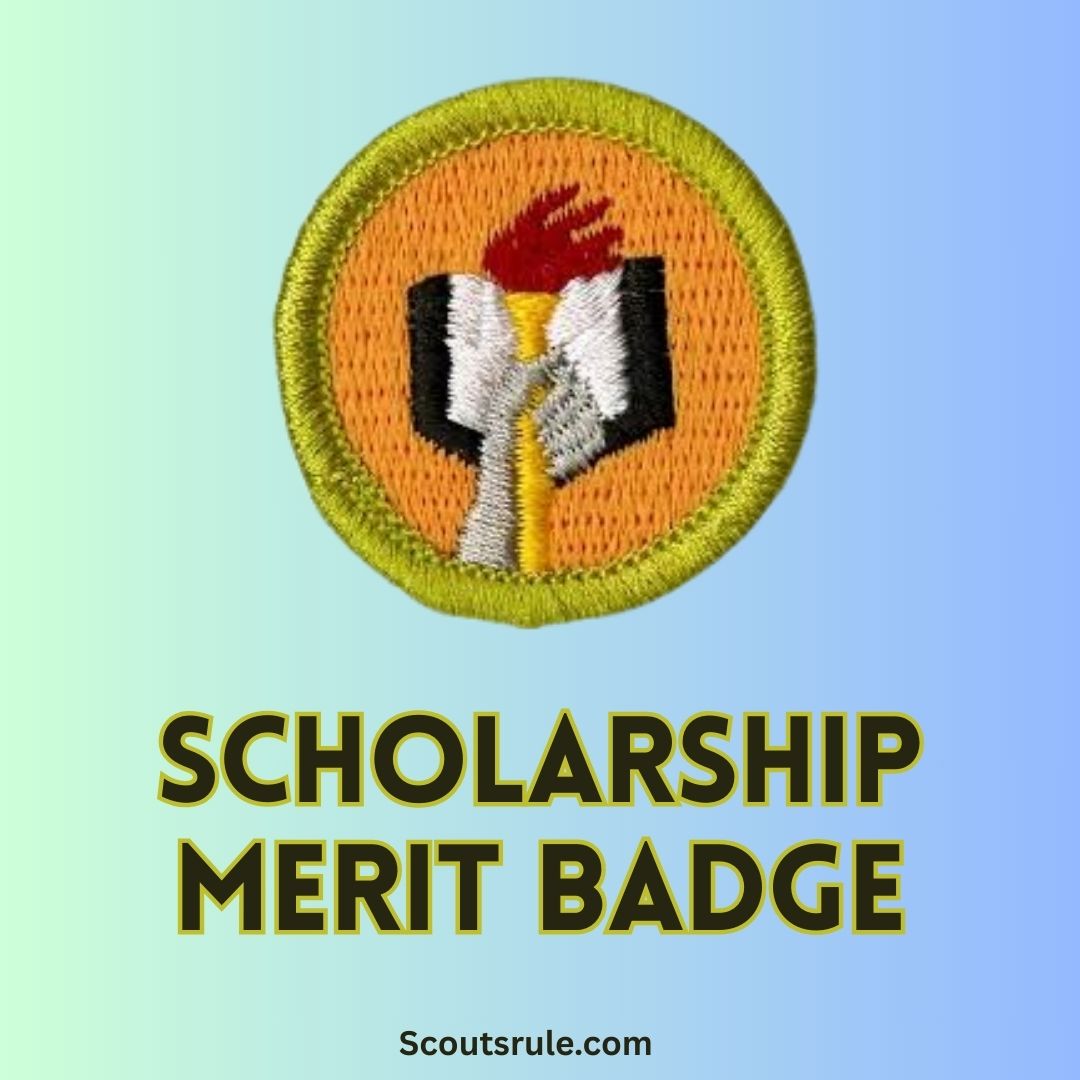
Scouting isn’t just about outdoor adventures and leadership skills—it also values academic growth and intellectual curiosity. The Scholarship Merit Badge is tailored for Scouts who strive for academic excellence, who want to improve study habits, and who understand that education is the gateway to a bright future. In this guide, we’ll discuss every facet of the badge, break down the requirements into manageable parts, and explore how the skills you develop along the way can have a lasting impact on your educational journey and career aspirations.
Post Contents
- 1. Understanding the Purpose of the Scholarship Merit Badge
- 2. Breaking Down the Requirements
- 3. Engaging Strategies to Meet the Requirements
- 4. Reflecting on the Value of Education and Setting Future Goals
- 5. The Long-Term Impact of Earning the Scholarship Merit Badge
- 6. Real-Life Examples and Success Stories
- 7. Additional Tips and Resources
- 8. The Lifelong Impact of Earning the Scholarship Merit Badge
- Final Reflections and Encouragement
- Conclusion
1. Understanding the Purpose of the Scholarship Merit Badge
What Is the Scholarship Merit Badge?
The Scholarship Merit Badge is designed to encourage you to take charge of your learning, be it by proving that you consistently perform well in school or that you’re making meaningful improvements. More than just a measure of academic marks, the badge focuses on developing skills critical for long-term academic success:
- Self-discipline and Time Management: Maintaining a study schedule and tracking assignments.
- Research Skills: Evaluating and using a variety of informational resources (libraries, books, the Internet) to expand your knowledge.
- Career and Educational Exploration: Interviewing professionals, engaging with educational institutions, and understanding the broader context of learning both inside and outside the classroom.
- Reflective Thinking: Considering the value of education and setting personal goals.
Through this process, the Scholarship Merit Badge helps you to become a proactive learner, preparing you not just for school but also for higher education and beyond.
The Gift of Knowledge
The badge’s philosophy is that thorough education—beyond the classroom—is essential. Whether it’s by examining your academic performance, visiting resources in your community, or discussing educational strategies with professionals, you are encouraged to build a framework that will keep you on a path of continuous learning. Ultimately, this badge is a recognition of your dedication to education and your commitment to achieving your personal best.
2. Breaking Down the Requirements
The Merit Badge is structured into several parts that allow you to demonstrate your academic progress and to engage with learning in a holistic way. Generally, the requirements are divided into two main sections:
Requirement 1: Demonstrate Academic Performance
You must do one of the following:
- Option 1a: Show that your school grades have been an average of B (80 percent or higher) or above for one term or semester.
- Option 1b: Show that for one term or semester you have improved your school grades over the previous period.
How to Succeed in Requirement 1:
- Documentation: Gather your school report cards or transcripts for at least one term. If opting for a grade improvement route (Option 1b), prepare a written summary comparing your previous and current performance. Include insights into what changes you made (better study habits, improved organization, seeking help from teachers, etc.).
- Reflection: Reflect on what factors contributed to your consistent performance or marked improvement. Your counselor may ask you about challenges you overcome and techniques you used to reach your academic goals.
- Importance: This requirement is more than a grade check—it’s about developing accountability for your learning. Keeping track of your progress encourages discipline that will serve you in future academic pursuits and scholarship applications.
Requirement 2: Engage in Educational Activities Beyond the Classroom
For this requirement, you must complete two out of the following four activities:
Option 2a: Explore Educational Places
- Task: Make a list of educational places in your community (excluding your school). These might be libraries, museums, community centers, science centers, historical sites, or even organizations that offer educational workshops.
- Visit & Report: Choose one of these places, visit it, and then write a report on how you used that place for self-education. Your report should include details like:
- The type of educational resource it is.
- What you learned during your visit.
- How the experience can be applied to your academic or personal growth.
- Benefits: This activity broadens your understanding of education beyond textbooks and classrooms, helping you appreciate community resources and self-driven learning.
Option 2b: Interview Established Professionals
- Task: With approval from your counselor and parent, arrange interviews with two professionals (other than teachers or school staff) who have established careers.
- Discussion Points: Ask them about:
- Their educational backgrounds.
- The training and additional education they received after formal schooling.
- How their education helped prepare them for their careers.
- The methods they use to continue educating themselves throughout their lives.
- Outcome: Write a report summarizing your interviews, highlighting unexpected insights, challenges faced, and how continuing education has played a role in their professional success.
- Tip: Prepare your questions in advance, record the conversation (with permission), and take detailed notes. This will not only impress your interviewer but will also help you structure a comprehensive report.
Option 2c: Keep a Daily Planner and Discuss Time Management
- Task: Use a daily planner (digital or paper) to track your school assignments, extracurricular activities, and personal goals for at least one week.
- Presentation: Show your completed planner to your counselor and discuss your methods of organization. Explain how the planner helps you manage your time, prioritize tasks, and balance school with other responsibilities.
- Reflection: Reflect on any challenges you encountered in managing your time and how you overcame them. Time management is one of the most valuable skills you can develop for lifelong success, making this activity exceptionally important.
Option 2d: Discuss the Advantages and Disadvantages of Different Research Methods
- Task: Engage in a discussion (or prepare a written report) on the various methods available for research when completing school assignments.
- Comparison Elements: Evaluate the benefits and drawbacks of:
- Using a traditional library vs. online research.
- Referring to books and periodicals compared to digital media.
- The reliability of various sources, including scholarly articles, news sites, and opinion pieces.
- Utility: Explain how each method can be best used in different circumstances and how to evaluate the credibility of sources. This discussion is essential in today’s information age, where the ability to discern quality information is critical for academic success.
Each of these activities is chosen not only to fulfill badge requirements but also to make you think strategically about how you approach learning. Whether you explore community resources, talk to professionals, or refine your personal organization skills, each path provides a unique perspective on lifelong scholarship.
3. Engaging Strategies to Meet the Requirements
Planning and Organization
The key to success with the Scholarship Merit Badge is starting with a plan. Begin by:
- Reviewing Your Academic Record: Before deciding on Option 1a or 1b for Requirement 1, review your recent report cards. Determine whether you’ve consistently maintained a B average or if you have shown noticeable improvement.
- Setting Goals: If you opt to show improvement, set clear, attainable goals for the next term. Write these goals down in your planner and track your progress regularly.
- Scheduling Activities: For Requirement 2, schedule dates to visit one educative facility or set up interviews with professionals. Early planning shows initiative and helps accommodate the busy schedules of professionals you plan to contact.
Preparing for Interviews and Visits
Tips for Conducting Professional Interviews (Option 2b)
- Research in Advance: Know a little bit about the professional’s background. Use this information to tailor your questions.
- Prepare Open-Ended Questions: Ask questions that encourage detailed responses, such as “Can you describe a challenge you faced in your career and how your education helped you overcome it?” or “What do you think is the most important skill you learned in your educational journey?”
- Show Appreciation: After your interview, send a thank-you note. This courteous act reflects well on you and reinforces the professional relationship.
- Document the Experience: Write your insights in detail. Reflect not only on what you learned about their educational path but also on how their methods of continuing education can influence your own studies.
Maximizing the Benefits of a Community Educational Visit (Option 2a)
- Choose Wisely: Pick a place that genuinely interests you—a museum on science, a historical archive, or even a community learning center. Your genuine interest will be evident in your report.
- Engage Actively: Ask questions if staff members are available, take notes, and consider how the visit broadened your perspective on learning.
- Report Thoughtfully: In your report, don’t just list what you saw; detail how the experience connects to your academic interests and potential future pursuits. Explain why this experience was valuable to your self-education.
Effective Use of a Daily Planner (Option 2c)
- Be Consistent: Dedicate time each day to record your assignments, deadlines, and extra-curricular activities. Consistency will reveal patterns in your productivity.
- Reflect Daily: At the end of each day, evaluate what you accomplished and what could be improved. Reflecting regularly builds habits that help manage stress and optimize time usage.
- Discuss with Your Counselor: Be open in discussing challenges—maybe you struggled to balance study with social life. Your counselor can offer advice and additional strategies.
- Digital vs. Paper: Whether you use a digital tool (apps like Google Calendar or Trello) or a paper journal, ensure that your chosen system is one you can stick with reliably.
Evaluating Research Methods (Option 2d)
- Learn the Tools: Explore different libraries, digital databases, and online journals. Understand the strengths and limitations of each.
- Discuss Credibility: Evaluate different sources. For example, academic journals are often peer-reviewed and more reliable than random websites. Conversely, newspapers might provide current event insights but may lack depth.
- Real-World Application: Think about how these methods apply to your own assignments. Experiment with using various methods to compare which technique suits a specific type of research question best.
4. Reflecting on the Value of Education and Setting Future Goals
One of the most valuable aspects of the Scholarship Merit Badge is the opportunity it offers for self-reflection. Beyond fulfilling requirements, you’re encouraged to consider:
- The Role of Education in Your Life: Think deeply about how academic success can influence your future career and personal growth. Consider questions like: What does education mean to you? How does it empower you to achieve your goals?
- Lifelong Learning: The badge isn’t just about getting good grades—it’s about embracing a lifelong commitment to discovery and improvement. Reflect on the idea that learning doesn’t end with school; it is a continuous process.
- Goal Setting: Write a thoughtful report detailing your educational goals for the next year, in high school, or even as you look ahead to college. Include what specific skills you wish to develop further, areas of interest you want to explore, and how you plan to pursue scholarship opportunities.
This reflective process is critical—not only does it help you understand the value of education, but it also prepares you for future academic interviews and scholarship applications where you must articulate your personal journey and ambitions.
5. The Long-Term Impact of Earning the Scholarship Merit Badge
Building a Foundation for Future Success
Earning the Scholarship Merit Badge is a milestone that serves several purposes:
- Academic Discipline: By tracking your grades, organizing your time with a planner, and evaluating your study methods, you build skills that directly translate to higher education and even professional environments.
- Scholarship Readiness: Colleges and scholarship committees look for evidence of self-discipline, intellectual curiosity, and a commitment to continuous learning. The badge is an early demonstration of these attributes.
- Career Exploration: Interviewing professionals helps you understand the linkage between education and career success. Learning how diverse educational journeys lead to various career paths can provide valuable insights as you make decisions about your own future.
- Personal Growth: The badge challenges you to become a self-directed learner. You learn not only to absorb information but also to question, reflect, and adapt—skills that are critical in an ever-changing world.
Transferable Skills
The skills you develop while working on the Scholarship Merit Badge will benefit you long after you’ve earned it:
- Time Management: The capacity to juggle school assignments, interviews, and self-study is essential in college and the workforce.
- Interpersonal Communication: Engaging with professionals, asking meaningful questions, and recording detailed answers enhance your communication skills.
- Critical Thinking and Analysis: Evaluating research sources, comparing educational methods, and reflecting on your own learning methods foster deep analytical abilities.
- Documentation and Reporting: Whether it’s preparing a written report of an interview or discussing your time management strategies, the process of documenting your thoughts strengthens your writing and organizational skills.
6. Real-Life Examples and Success Stories
While every Scout’s journey is unique, here are a few hypothetical examples of how fellow Scouts might have successfully completed the Scholarship Merit Badge:
Case Study 1: The Grade Improver
Sarah decided to opt for Option 1b. After receiving a lower average in one term, she made a concerted effort by:
- Creating a detailed study schedule using a digital planner.
- Seeking additional help in challenging subjects.
- Actively participating in class discussions and tutoring sessions.
At the end of the following term, Sarah’s grades improved significantly. She documented her progress with report cards and a reflective essay detailing the changes she made. Sarah’s counselor noted her remarkable improvement and her proactive approach to academic challenges.
Case Study 2: The Inquisitive Interviewer
Michael, a naturally curious Scout, chose Option 2b. He arranged interviews with two professionals—a local engineer and a community health worker. During the interviews, Michael asked detailed questions about:
- Their educational paths.
- The challenges they encountered.
- Their methods for continuing education after formal schooling.
Michael compiled his findings in a thorough report that not only recounted the professionals’ stories but also compared their approaches to lifelong learning. His conclusions provided him with ideas for potential career paths and helped him appreciate the value of continued self-education.
Case Study 3: The Community Explorer
Jessica opted to explore an educational resource as part of Option 2a. She visited a nearby science museum that featured interactive exhibits on physics and astronomy. Fascinated, Jessica took detailed notes and even participated in a workshop offered at the museum. In her report, she discussed:
- How interactive learning helped her grasp complex scientific concepts.
- The benefits of gaining knowledge outside of a classroom setting.
- The museum’s role in sparking her interest in pursuing a science-related career.
Her thoughtful report demonstrated how community resources can complement formal education, enriching her overall learning experience.
Each of these examples shows that success in the Scholarship Merit Badge is not solely measured by grades. It’s about demonstrating a willingness to learn, the initiative to seek out educational experiences, and the ability to reflect on and document what you have learned.
7. Additional Tips and Resources
Preparing Your Documentation
- Keep Detailed Records: Whether you’re tracking your grades or preparing interview notes, organize your materials in a neat binder or digital folder. This organization not only helps you during badge counseling sessions but also sets a pattern for effective document management in college and professional work.
- Write in Your Own Words: Academic integrity is critical. When summarizing or reflecting on your experiences, use your own language to describe your thoughts and learnings. This approach ensures that the knowledge is truly internalized.
Seeking Guidance
- Talk to Your Counselor: Your merit badge counselor is an invaluable resource. Ask questions about any requirement that seems unclear, seek advice on how best to schedule interview sessions, and get help with planning your daily schedule.
- Involve Your Family: Parents and guardians can provide support by discussing their own educational experiences and even helping you arrange community visits or professional interviews.
- Peer Collaboration: Talking with fellow Scouts who have completed the merit badge can give you insights into effective strategies and common pitfalls.
Utilizing Online and Community Resources
- ScoutSmarts Guide: This online resource offers tips and step-by-step instructions tailored to the Scholarship Merit Badge requirements. It’s a great starting point for understanding what’s expected .
- Scoutles Directory: Another excellent source of ideas and detailed examples, Scoutles can help you see the broader application of the badge’s goals in academic and career planning .
- Official BSA Requirements: Always refer to the official Boy Scouts of America Scholarship Merit Badge page for the latest requirements and any updates. This ensures that you are meeting all necessary criteria to earn the badge .
8. The Lifelong Impact of Earning the Scholarship Merit Badge
Beyond the Badge
When you complete the Scholarship Merit Badge, you’re not just earning a patch to add to your sash—you’re building a suite of lifelong skills:
- Self-Education: The badge empowers you to seek knowledge outside of traditional classrooms. This habit of self-directed learning is invaluable in our rapidly changing world.
- Preparation for College: By improving your study habits, time management, and research skills, you’re laying a strong foundation for academic success in college. Colleges and scholarship boards will recognize your initiative and dedication.
- Career Readiness: Interviews with established professionals and interactions with community educational resources provide insight into potential career paths. This exposure helps you make informed decisions about what you want to do in the future.
A Testament to Dedication
Earning the Scholarship Merit Badge is not an easy feat—it requires honesty, diligence, and a clear commitment to personal improvement. Reflecting on your academic journey and taking proactive steps to enhance your skills demonstrates maturity and foresight. Whether you intend to pursue a career that relies heavily on scholarship and advanced learning or simply want to cultivate good study habits, this merit badge serves as both a milestone and a stepping stone.
Final Reflections and Encouragement
Imagine looking back years later and seeing the Scholarship Merit Badge not just as a patch on your uniform, but as a turning point—a moment when you decided to invest in your future by embracing the challenges of academic and personal growth. This badge is an opportunity to explore your potential fully and to commit to building the habits that will carry you through life.
Every time you check your planner, review your report card, or recall a conversation with a professional who inspired you, remember that the work you do today shapes your tomorrow. The Scholarship Merit Badge is a clear signal to yourself and to others that you value education, that you’re determined to succeed academically, and that you’re ready to take on the challenges of the future head-on.
Maintaining high grades or making just one term of improvements requires hard work and persistence. Similarly, stepping out of your comfort zone to interact with experienced professionals or engaging with community educational resources requires initiative and the willingness to explore new avenues of knowledge. These experiences enrich you and build a resilient character, well-prepared for the rigors of higher education and professional life.
To every Scout embarking on this journey: take this badge as an invitation to become a lifelong student not only in the academic sense but in every aspect of life. Embrace new ideas, seek multiple perspectives, and never be afraid to ask questions. Your commitment to scholarship is a testament to your potential and will pave the way for continued academic and personal growth.
Conclusion
The Scholarship Merit Badge is more than just a set of requirements—it is a comprehensive program that teaches you how to monitor your academic performance, utilize community resources, effectively manage your time, and reflect on the value of education in your life. As you work through the badge’s requirements, you will develop crucial skills that extend far beyond the classroom, preparing you for college, a career, and a lifetime of learning.
Remember, your journey to earning the Scholarship Merit Badge is unique. Use the resources provided, plan carefully, and take the initiative to explore every opportunity for growth. With persistence, proper planning, and mindful reflection, you will not only earn the badge but also create a strong foundation for your future success.

Hi, Robin here, A former lead Scout and here I share my inspiring stories about USA Scouts, leadership, adventure, how to guides and more.


